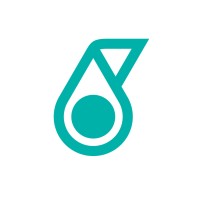
bp
Check out our commenting guidelines 👉 bp.com/CommentsGuide



Check out our commenting guidelines 👉 bp.com/CommentsGuide

Petroliam Nasional Berhad (PETRONAS) is a leading global energy company committed to powering society’s progress in a responsible and sustainable manner. With close to 50,000 employees and a global reach spanning over 100 countries, we are ranked among the world’s largest corporations by revenue in the Fortune Media IP Ltd’s 2022 Fortune Global 500® list. As Malaysia’s national oil and gas company, we safeguard and manage the nation’s hydrocarbon resources to ensure national energy security and maximise value. We explore, develop and produce hydrocarbons as well as cleaner energy solutions. We have three core businesses, namely Upstream, Gas and Downstream, supported by Project Delivery and Technology division, which acts as an enabler. We recently launched Gentari, our new entity providing customers with cleaner energy and lower carbon solutions in three core offerings – renewables, hydrogen and green mobility alongside our core portfolio. We remain committed to produce oil and gas in a differentiated manner, with focus on reducing carbon emissions and at competitive cost. Our hydrocarbon portfolio today is two-thirds gas, which puts us in an advantageous position as gas and Liquefied Natural Gas (LNG) will continue to play a vital role even as the energy system evolves. As one of the leading LNG players in the world, PETRONAS will continue to serve the global LNG demand. As a responsible and conscientious global energy player, sustainability is at the heart of our business and how we operate. Our commitment to responsible business growth and positive contributions to society and the environment remains unwavering. Fuelled by our passion to be a partner for our customers in the journey towards a lower carbon energy future, every step we take brings us closer towards achieving our aspiration of Net Zero Carbon Emissions by 2050 (NZCE 2050).
Security & Compliance Standards Overview












No incidents recorded for bp in 2025.
No incidents recorded for PETRONAS in 2025.
bp cyber incidents detection timeline including parent company and subsidiaries
PETRONAS cyber incidents detection timeline including parent company and subsidiaries
Last 3 Security & Risk Events by Company
Angular is a development platform for building mobile and desktop web applications using TypeScript/JavaScript and other languages. Prior to versions 19.2.16, 20.3.14, and 21.0.1, there is a XSRF token leakage via protocol-relative URLs in angular HTTP clients. The vulnerability is a Credential Leak by App Logic that leads to the unauthorized disclosure of the Cross-Site Request Forgery (XSRF) token to an attacker-controlled domain. Angular's HttpClient has a built-in XSRF protection mechanism that works by checking if a request URL starts with a protocol (http:// or https://) to determine if it is cross-origin. If the URL starts with protocol-relative URL (//), it is incorrectly treated as a same-origin request, and the XSRF token is automatically added to the X-XSRF-TOKEN header. This issue has been patched in versions 19.2.16, 20.3.14, and 21.0.1. A workaround for this issue involves avoiding using protocol-relative URLs (URLs starting with //) in HttpClient requests. All backend communication URLs should be hardcoded as relative paths (starting with a single /) or fully qualified, trusted absolute URLs.
Forge (also called `node-forge`) is a native implementation of Transport Layer Security in JavaScript. An Uncontrolled Recursion vulnerability in node-forge versions 1.3.1 and below enables remote, unauthenticated attackers to craft deep ASN.1 structures that trigger unbounded recursive parsing. This leads to a Denial-of-Service (DoS) via stack exhaustion when parsing untrusted DER inputs. This issue has been patched in version 1.3.2.
Forge (also called `node-forge`) is a native implementation of Transport Layer Security in JavaScript. An Integer Overflow vulnerability in node-forge versions 1.3.1 and below enables remote, unauthenticated attackers to craft ASN.1 structures containing OIDs with oversized arcs. These arcs may be decoded as smaller, trusted OIDs due to 32-bit bitwise truncation, enabling the bypass of downstream OID-based security decisions. This issue has been patched in version 1.3.2.
Suricata is a network IDS, IPS and NSM engine developed by the OISF (Open Information Security Foundation) and the Suricata community. Prior to versions 7.0.13 and 8.0.2, working with large buffers in Lua scripts can lead to a stack overflow. Users of Lua rules and output scripts may be affected when working with large buffers. This includes a rule passing a large buffer to a Lua script. This issue has been patched in versions 7.0.13 and 8.0.2. A workaround for this issue involves disabling Lua rules and output scripts, or making sure limits, such as stream.depth.reassembly and HTTP response body limits (response-body-limit), are set to less than half the stack size.
Suricata is a network IDS, IPS and NSM engine developed by the OISF (Open Information Security Foundation) and the Suricata community. In versions from 8.0.0 to before 8.0.2, a NULL dereference can occur when the entropy keyword is used in conjunction with base64_data. This issue has been patched in version 8.0.2. A workaround involves disabling rules that use entropy in conjunction with base64_data.